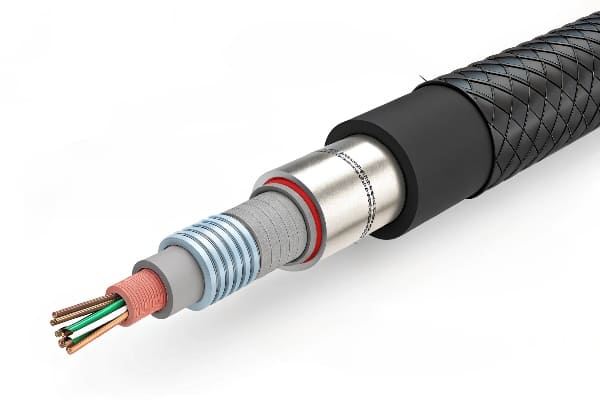Rubber sleeves are versatile components used in a variety of industries for protection, insulation, and sealing. These flexible coverings are commonly applied to protect sensitive components from wear, moisture, chemicals, and abrasion. But what exactly are rubber sleeves, and why are they so widely used?
Rubber sleeves are primarily used to protect wires, cables, and mechanical components from external damage. They also provide electrical insulation and enhance safety in various applications.

Their flexibility and durability make rubber sleeves suitable for a wide range of environments, from electrical systems to automotive parts and machinery. Let’s explore what rubber sleeves are, what materials they’re made from, and their advantages and disadvantages.
What Are Rubber Sleeves?
Rubber sleeves1 are hollow, flexible tubes made from various rubber materials, designed to slide over and protect wires, cables, or mechanical parts. They provide insulation, prevent abrasion, and protect against moisture, dust, and chemicals.
Rubber sleeves serve as protective coverings that safeguard cables, wires, or moving components from external environmental factors.
In addition to their protective role, rubber sleeves also help prevent electrical shorts and signal interference in electronic applications. They’re common in electrical wiring, automotive cables, and machinery components, providing both safety and longevity.
Key Features of Rubber Sleeves
- Protection: Rubber sleeves prevent wear, abrasion, and environmental damage.
- Insulation: They provide electrical insulation, keeping wires and cables safe.
- Flexible Fit: Rubber sleeves fit snugly around the components they protect.
- Durability: Resistant to many chemicals and weather conditions.
Rubber sleeves are often used in places where cables, wires, or machinery parts are exposed to harsh environments and need added protection from external forces.
What Are the Materials for Rubber Sleeves?
Rubber sleeves are made from various types of rubber, depending on the specific needs of the application. The material selection is critical for ensuring the sleeves provide the right balance of flexibility, durability, and resistance to external factors.
The most common materials used for rubber sleeves include natural rubber, neoprene, silicone, EPDM, and nitrile.
Types of Rubber Materials for Sleeves
- Natural Rubber: Known for its excellent flexibility and high resilience. Ideal for applications requiring high elasticity.
- Neoprene: Offers good resistance to weathering, oil, and chemicals. Common in automotive and industrial settings.
- Silicone: Resists extreme temperatures and is highly flexible. Often used in high-temperature applications.
- EPDM (Ethylene Propylene Diene Monomer): Resistant to heat, ozone, and weathering, making it suitable for outdoor and automotive applications.
- Nitrile: Offers good resistance to oils, fuels, and chemicals. Often used in automotive and industrial applications where exposure to these substances is frequent.
Each material provides unique benefits, so choosing the right one depends on the environment in which the rubber sleeve will be used.
What Are the Advantages and Disadvantages of Rubber Sleeves?
Like any product, rubber sleeves come with their advantages and disadvantages. Understanding these can help you decide whether rubber sleeves are the best option for your application.
Rubber sleeves offer great protection, flexibility, and insulation, but they can have limitations in certain harsh environments.
Advantages of Rubber Sleeves
- Protection: Rubber sleeves are highly effective at shielding cables, wires, and mechanical components from abrasions, chemicals, moisture, and contaminants.
- Electrical Insulation: They provide excellent electrical insulation, ensuring safe operation in electronic and electrical systems.
- Durability: Rubber sleeves are designed to last, offering long-term protection in harsh environments.
- Flexibility: The flexibility of rubber allows sleeves to conform to a wide range of shapes, providing a snug, secure fit.
Disadvantages of Rubber Sleeves
- Environmental Impact: Over time, rubber materials may degrade when exposed to UV light, high temperatures, or ozone, especially in outdoor applications.
- Limited High-Temperature Resistance: While some rubber types like silicone offer good heat resistance, others may fail in extremely high-temperature environments.
- Cost: High-quality rubber materials can be expensive, especially for custom or industrial-grade sleeves.
- Wear Over Time: In harsh environments, rubber sleeves can wear down, requiring periodic replacements.
Despite these disadvantages, rubber sleeves are highly effective in many applications, offering a balance of flexibility, durability, and protection.
How Often Should Rubber Sleeves Be Tested?
Testing rubber sleeves2 regularly is important to ensure they continue to provide the level of protection required for specific applications. The frequency of testing depends on the conditions in which the sleeves are used.
Rubber sleeves should be tested at regular intervals, particularly in environments where they are exposed to mechanical stress, extreme temperatures, or chemicals.
Testing Considerations
- Environmental Exposure3: If the sleeves are used in harsh environments, such as outdoors or in chemical plants, they should be tested more frequently for wear, cracking, or other signs of degradation.
- Mechanical Stress4: In mechanical applications, rubber sleeves should be checked regularly for signs of abrasion, especially if they are exposed to moving parts.
- Temperature Extremes5: Rubber sleeves exposed to high or low temperatures should be checked for material breakdown, stiffness, or brittleness over time.
Testing intervals may vary, but a good rule of thumb is to inspect rubber sleeves every 6 to 12 months, depending on their usage and the severity of the environment. Regular testing ensures the sleeves continue to perform their protective functions effectively.
Conclusion
Rubber sleeves are crucial for protecting cables, wires, and mechanical components in many industrial and electrical applications. Their flexibility, durability, and ability to provide electrical insulation make them indispensable. However, regular testing is essential to ensure they remain effective over time.
-
Explore this resource to understand the diverse applications of rubber sleeves and their importance in protecting components across industries. ↩
-
Learn about effective testing methods for rubber sleeves to ensure their longevity and performance in demanding environments. ↩
-
Understanding best practices for testing in harsh environments can help ensure the longevity and safety of rubber sleeves. ↩
-
Learning how to assess mechanical stress can prevent premature failure and enhance the performance of rubber sleeves. ↩
-
Exploring the effects of temperature on rubber can provide insights into maintaining the integrity of rubber sleeves in varying conditions. ↩








